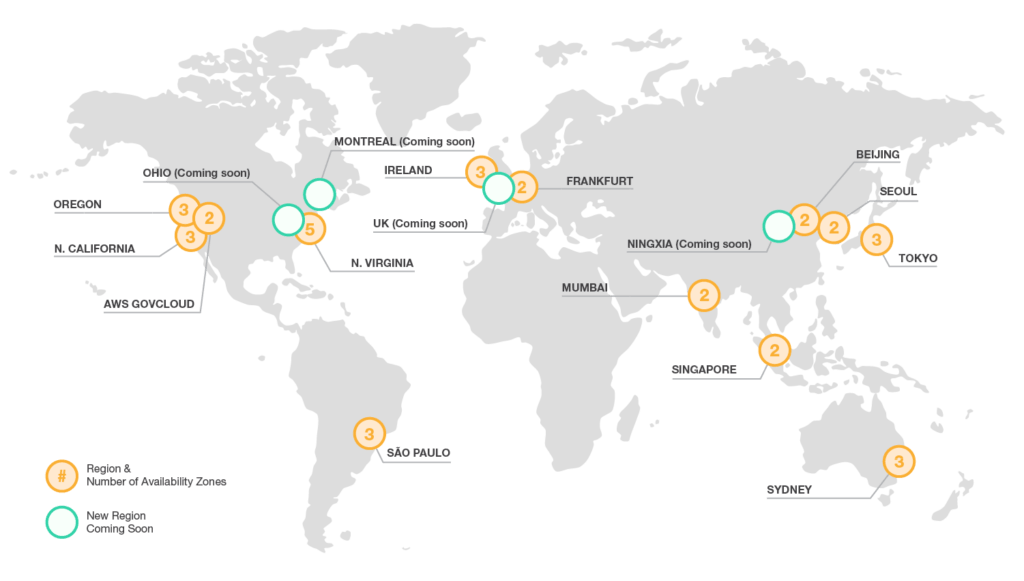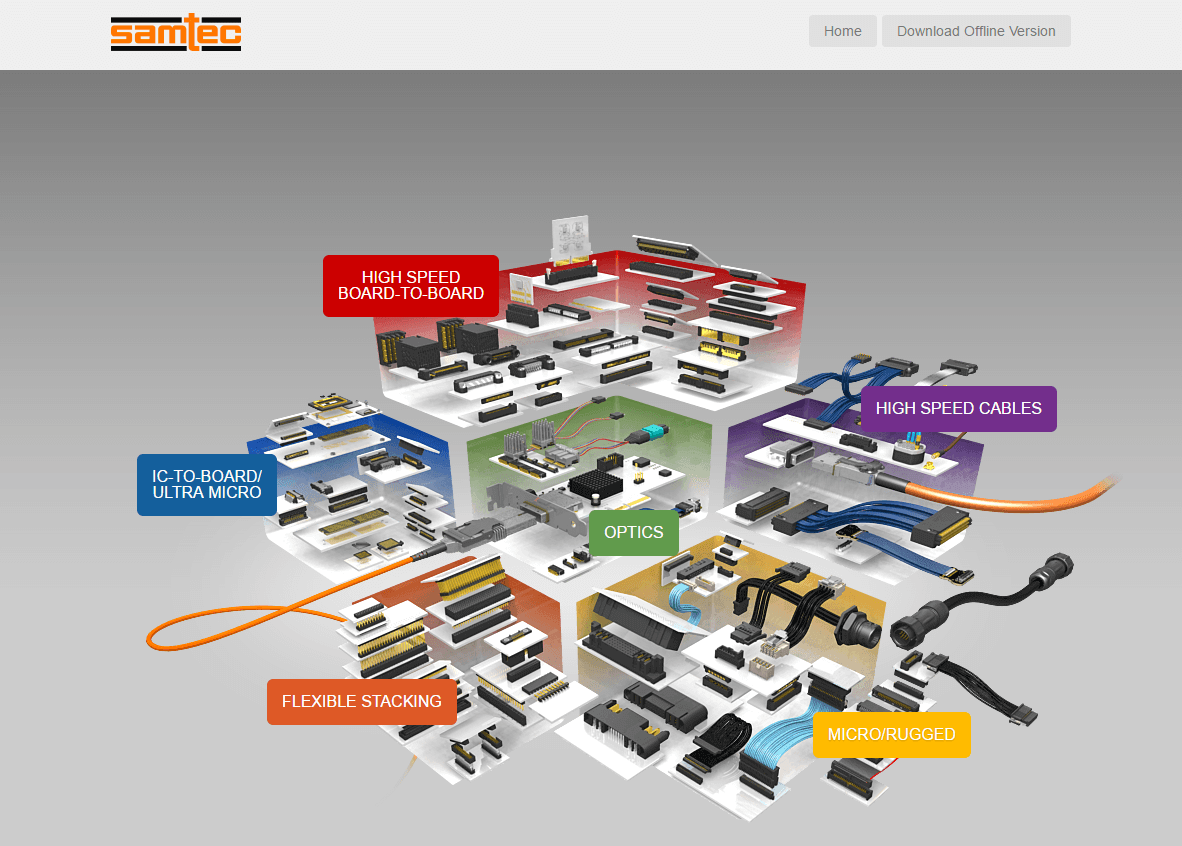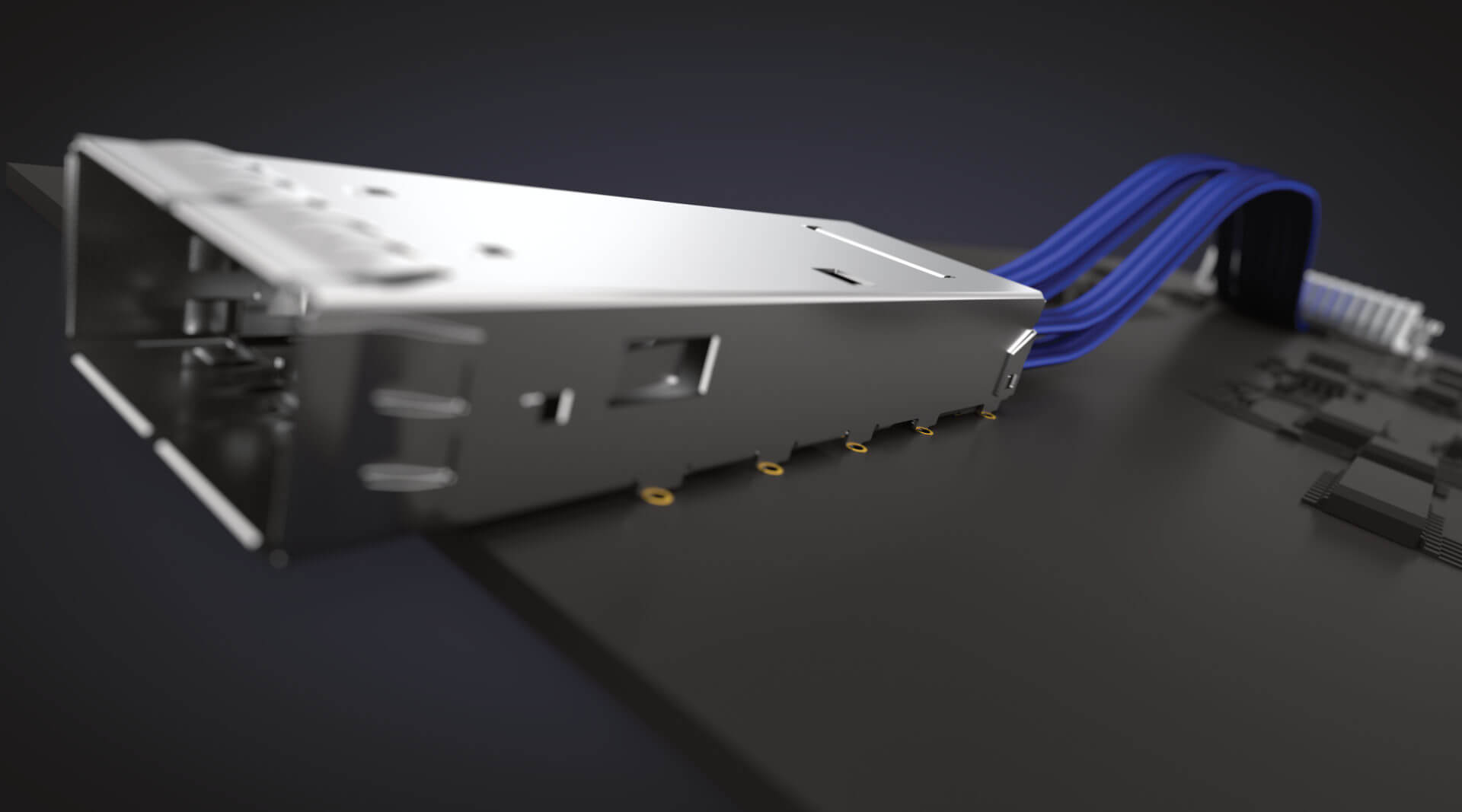
One of the most raved about features of Samtec.com is the ease-of-access and wide variety of technical documentation that is available throughout the website, all of which is available without jumping through a bunch of hoops.
Or as we web nerds like to call it – “Suddendocs,” which stems from our Sudden Service core value.
From our high resolution full-line catalog, to our in-depth product design guides, to our huge array (pun intended) of drawings, footprints, electrical models, layout files and test reports, and everything in between, Samtec.com houses over 100,000 different pieces of product documentation totaling nearly 60 gigabytes.
And this doesn’t include 3D models, which are built and delivered on-the-fly through our Part Configurator tool.
Each month, we deliver approximately 385 gigabytes of technical documentation (over a terabyte per quarter) to our users spread across the world, with the challenge of ensuring blazing fast performance for every single byte delivered.
There is a lot of geekery that goes on behind of scenes of making 100,000 files downloadable in seconds anywhere in the world, with 100% uptime, and essentially zero difference in location-based latency no matter where you are.
While it’s easy to take something as simple as a PDF download for granted when it happens, it’s just as easy to get frustrated when it doesn’t work correctly. We’re doing our best to make sure that doesn’t happen.

The legacy system and the demands to scale globally
In the early days of the Internet of Things it was completely acceptable to host and deliver files from a single location. In fact, many organizations still deliver files this way to this day.
Until the last five years or so, most files being delivered over the web were relatively small. Outside those of major media distribution companies, the majority of large files were a few MB at most. There just wasn’t a large demand for high resolution content, and the user activity just wasn’t that much.
Fast forward to today, and even people with personal blogs are delivering high resolution PDFs, huge images to support technologies like 4k displays, lengthy tutorial videos, and more. The world of file delivery has changed, and the speed expectations have never been greater.
With these rapidly growing global speed expectations, hosting and delivering all of our files from a single location was causing far too many bottlenecks and dips in network reliability.
Imagine the difference between tossing a baseball a few feet to a few people, and tossing a watermelon a few miles to a few hundred people.
As we began our research, we kicked around several options to solve this problem, including big name content delivery services like Akamai (which is actually the backbone of some of the others), CloudFlare, MaxCDN, Microsoft Azure, Amazon Web Services, and more.
Any one of these would have worked, but we ended up choosing Amazon Web Services due to their wide and growing coverage (over 50 global edge locations), extremely flexible pricing model, ease-of-integration, and very user-friendly interface.
It was also pretty clear that a company like Amazon wasn’t going anywhere anytime soon, and we would continually reap the benefits of their growing network (knock on wood).

How we partnered with Amazon Web Services to deliver your files seamlessly
The first version of Samtec Picture Search, which we released a few years ago as I write this post, was actually the guinea pig for us to vet this technology for the rest of the website. After an initial release performed a bit slower than we anticipated, our development team was able to quickly stand up the AWS structure to power it from the cloud.
Since Picture Search was a green-field application that demanded heavy static resources, it made perfect sense to try out CloudFront, and it worked extraordinarily well. That application went from taking a couple of minutes to load in some cases, to just a few seconds.
Once our test model was proven and the decision was made, our next challenge was porting 100,000 files from our legacy system – being delivered from a single location on our own network, to AWS – being delivered from dozens of different distributed locations all across the globe.
And we needed to do all of this without interrupting the workflow of nearly 10,000 daily Samtec.com users who access over 4,000 files per day. This is where things get really nerdy, but I’ll do my best to simplify.
The first step was setting up Amazon’s Simple Storage Service (S3) to house all of our files, which is a step that is often skipped in an implementation like this.
This was critical because we needed to use S3 storage to eliminate the potential of stale or new files coming back to internal servers for delivery, which would defeat the purpose of a global CDN.
At worst, CloudFront would only ever fall back to an S3 storage bucket, which is not optimal, but is still relatively fast.
Once we managed to replicate our folder structure in S3, we then set up an efficient automated sync process that allows internal procedures to continue seamlessly while files copy “magically” from their original source straight to the cloud without manual involvement.
From there, we were able to use Amazon’s CloudFront tooling to set up several global distributions which use these S3 buckets for their source and which allow all of our static files and technical documents to be delivered worldwide globally, in a matter of seconds.
Of course we had to code 100,000+ static objects to use the new delivery system instead of the old one, and then cut over to the new ones without interrupting the user experience, but those are just details. Our development team did an excellent job of pulling this off!
The result was a significant difference in global speed and uptime for you, and a future-proof content delivery system for Samtec.com.
You can see what we now call our “Suddendocs” system at work with essentially any static file on our website, our Silicon-to-Silicon System Optimization Design Guide, for example.
The massive differences in global speed
Not only do we use this technology to power all of your technical documentation, but have also expanded it to serve our static web files, such as CSS, Javascript, and images all over the world.
Deploying this technology has played a key role in the user experience we deliver to you, in some cases allowing documents and applications to be delivered in seconds that used to take minutes (depending on your internet speed), like our high resolution full-line catalog, which is nearly 200 MB in size, and our Picture Search tool (mentioned earlier), which uses nearly 300 separate images.
The global speed of Samtec.com and the experience you encounter every day would not be possible without this key piece of its system.
—
I hope you enjoyed this insider’s look at our “Suddendocs” file delivery system. As always, you can reach the web team by emailing [email protected]. We’d be happy to talk with you!




